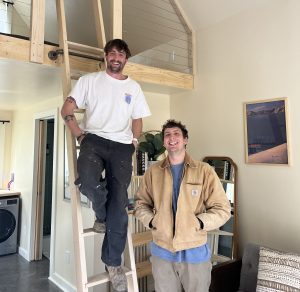Lack of affordable housing coupled with rising rents appears to have worsened Durham’s homelessness problem, according to an analysis by a Durham non-profit.
In a press conference Wednesday afternoon, Housing for New Hope shared the results of its annual Point-in-Time (PIT) Count, which seeks to estimate the number of people experiencing homelessness (both sheltered and unsheltered) in Durham. The count, conducted earlier this year, saw a 10% increase in unsheltered homelessness compared to last year.
The results suggest that Durham city and county may need to step up services–and confront deeper systemic issues–for a population struggling to find stable housing in one of the country’s hottest real estate markets.
“We are really feeling the loss of affordable housing—particularly deeply affordable housing,” said Russell Pierce, executive director of Housing for New Hope. “There needs to be more units that are publicly controlled so that we are able to address these shortages. There’s funding to get folks housed in many cases. But there just aren’t enough units.”
In its survey in January, Housing for New Hope, which provides a host of social services in Durham, found that the total number of people experiencing homelessness had dropped by 18 percent (from 459 to 375). Yet the number of unsheltered people rose for the third straight year, a 105 percent increase since 2020.
In particular, Pierce said, the non-profit is concerned about the number of families with children living in unsheltered conditions, a trend the group first saw in 2021. This year’s survey discovered 10 such families who lived unsheltered.
Moreover, African Americans comprise a majority of both sheltered and unsheltered populations. This year, 68 percent of the individuals experiencing homelessness were Black; according to 2020 census data, Black people make up 35.9 of Durham’s population.
Dramatic hikes in both rents and housing prices are making life harder for the homeless. In May 2018, the average apartment rental price in the Durham-Chapel Hill area was $1,034. By May 2022, this figure had jumped to $1,370. Durham’s buying market reflects similar trends. In 2018, the median listing price for a single-family home was about $250,000. Today, those prices have skyrocketed to about $415,000.
Colin Davis, who manages the city of Durham’s efforts to curb homelessness, said that the COVID-19 pandemic—and the ensuing mental health and eviction crises—may also explain the PIT trends.
Durham City Council member Leonardo Williams and County Commissioner Wendy Jacobs both attended Wednesday’s press conference.
Williams said that the city intended to be “as ambitious as possible” in creating more affordable housing in Durham. He referenced recent projects such as the Willard Street Apartments and The Joyce, residences that offer more than 160 affordable housing units combined.
Jacobs spoke to county efforts, such as redeveloping affordable units at 300 East Main Street and creating more educational opportunities and jobs for traditionally underserved populations.
Nevertheless, Jacobs said, the county must do more. Durham has done little to assist its most vulnerable unhoused residents—those who experience chronic homelessness and battle disabling conditions such as mental illness or substance abuse disorder, she said.
“We have a revolving door that goes from our emergency department to our jail, to our homeless shelters, to the streets, and then repeat,” Jacobs said. “All because they are not able to get the kind of health care that they need.”
Jacobs pointed out that Housing for New Hope is seeking funding for a project at 501 and 531 E. Carver Street that would ultimately provide about 120 affordable housing units and on-site support services for vulnerable residents. The County Commission is considering the request.
The annual Point-in-Time count took place on the night of January 25th. Housing for New Hope intentionally surveys during the coldest time of the year because unhoused individuals who still have connections to family members or friends are more likely to be taken in when cold and wet weather comes, Pierce said. By surveying in the winter, Housing for New Hope can make the most accurate estimate of those experiencing homelessness.
Each year’s count includes people staying in emergency shelters or transitional housing and unsheltered people living in places such as cars, stairways, commercial buildings, and more.
This year, 150 volunteers canvassed specific areas throughout the county and city, including encampment sites on Holloway and Roxboro streets and parts of Downtown that are known to attract transients. This year’s volunteers included Mayor Elaine O’Neal and Jacobs.




